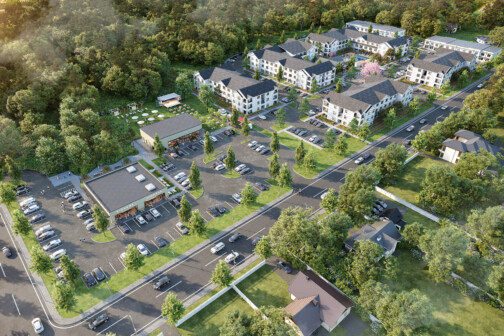The news that Smirnoff’s parent company. United Distillers, would contribute S3.8 million over eight years for projects in and around Fair Park was as unexpected as it was welcome. In June. Smirnoff paid S6 million to Starplex for naming rights to the complex, of which the city will receive not one dime. Because of the terms of what one Dallas civic leader calls “the worst contract ever entered into by the City of Dallas.” Pace Entertainment, the Houston-based tenant that runs Starplex, only pays the city a usage fee of 3 percent of operating revenues. Of the $18 million Pace took in from concerts and performances in 1999, it was required to pay a rent check of only $516.060.
Fortunately, the State Fair of Texas provides a point of comparison. Like Starplex, the Fair leases its use of Fair Park. Last year it took in about $18 million and paid $700,000 to the city. In essence, that fee is for the three weeks the State Fair runs, plus some office space in the off-season. But ii did more than that. In the past several years. the State Fair has paid an average of $3 million a year for improvements in the infrastructure at Fair Park, and in 1999, it paid $5 million. In other words, the Slate Fair deal is a cash cow for the citizens of Dallas.
Meanwhile, Pace’s parent company is being bought by Clear Channel Communications for $4.4 billion. One of the assets in the sale is the Starplex contract, which wasb negotiated during the mayoral term of Annette Strauss. But look at the bright side: The Pace contract only has 28 more years to run.
And there’s more rental news at Fair Park. The Dallas Park Board recommended (and the city council approved) granting Friends of Fair Park, an organization run by former City Councilman Craig Holcomb, 10 years of free rent for a building known as Magnolia Lounge at Fair Park, with options to extend the free rent for two more five-year terms after that. In this agreement between the Park Board and Friends of Fair Park for “no cost consideration to the city.” the Park Board refers to the Magnolia Lounge as a “historically significant structure located at Fair Park.”
Like the Starplex contract, this deal had its origins in the Annette Strauss era. It seems that Holcomb was in dire financial straits when then-Mayor Strauss secured a paid position for him as executive director of Friends of Fair Park, which supposedly is leading efforts to revitalize the park. More than a third of the approximately $150,000 raised each year by the Friends of Fair Park goes to pay Holcomb’s .salary, which in 1998 was $63.000. (One way Holcomb raises money for his salary is by selling $45 bricks emblazoned with the names of donors, which he places in the park.)
What does Holcomb do for his salary? If s hard to say. A visitor to the offices of the nonprofit organization doesn’t get the impression of a beehive of activity. On the day I stopped by. Holcomb was the only person present. As I looked around, I couldn’t help but notice that, while on the inside the Magnolia Lounge is an impressive building with a rich history (it once hosted the Margo Jones Theater in the Round), like so much of the rest of Fair Park it appears to be greatly underutilized. But what took me aback was the building’s shabby-looking exterior. Until I saw the sign I thought I had gotten the wrong directions. After all, this is the headquarters of the organization that is supposed to he leading the revitalization of Fair Park. It looks abandoned and decrepit.
City Councilwoman Laura Miller isn’t a big fan of Holcomb’s. “I don’t know what the guy does,” she says. “He has to be called by Steve (Steve Wolens. Miller’s husband and chairman of the Legislature’s oversight committee) to come down and lobby” for support for Fair Park. Miller also commented on the “shabby-looking” aspect of much of the park. “What are Friends of Fair Park doing about it?” she asks. “At least they should be out there with cans of paint sprucing the place up.”
Most of those I talked with don’t dislike Craig Holcomb, who is a pleasant enough fellow who clearly wants to make Fair Park a better facility. Some, such as local political gadfly Rick Finlan. quesiion the legality of the city giving free rent to an organization whose main purpose seems to be to provide somebody with a job. Others just don’t see Holcomb or his organization as the catalyst for realizing the potential of this remarkable 277-acre complex in the heart of Dallas.
Nor do many people put much hope in the Park Board, which in 1987 took control of year-round management of Fair Park from the State Fair of Texas. The 1987 agreement giving the Park Board management control had a clear purpose, according to contract documents: “This change in management is intended to enhance the year-round programming of Fair Park as an entertainment center, tourist attraction, and museum complex.” If that was the intention, by any standard it hasn’t been met. Three successive mayors have put Fair Park on the back burner. Ron Kirk installed political ally Diane Currey as chair of the Park Board as a reward for past services rather than with a mandate to lead the charge for change. Like Holcomb, Currey is viewed by political observers as a “nice person,” but not someone with the vision or the drive to lead a Fair Park revitalization effort. As for the mayor himself, his attention has been otherwise engaged. In practical terms this has meant turning over the future of Fair Park to mid-level city bureaucrats.
Twenty-five years ago, D Magazine featured an article by respected Dallas architect James Pratt titled, “How to Make Fair Park a Fair Park.” Pratt envisioned a “great urban park…a place to go…because the Park itself attracts you with its limitless choices of activities: shopping, museum-hopping, dining, grabbing a beer, gambling penny ante, watching acrobats or grand opera or Shakespeare, finding a horse show or hockey match you didn’t know about, or simply watching everyone else doing everything else.”
The failure to clean up the area between downtown and Fair Park has loomed as a major reason why the dream of Fair Park as the central recreational facility in Dallas has been so hard to realize. Successive generations of Dallas civic leaders talked grandly of connecting Fair Park to downtown but did little to make the dream a reality. The non-descript buildings and cheap frame houses that stood between the business district and Fair Park continued to deteriorate over the decades, and the surrounding neighborhoods on the way to Fair Park developed the reputation of being high crime areas. People didn’t talk much about the situation. They just stopped taking their families and out-of-town visitors to the Park. Crime and personal safety concerns even affected attendance at the State Fair of Texas and the Dallas Summer Musicals, the mainstays of the park.
Ironically, benign neglect may prove to be Fair Park’s salvation. A massive “urban renewal” scheme to make way for a grand thoroughfare would have demolished the area’s little buildings and warehouses- thereby obliterating Deep Ellum. Today it is Deep Ellum that is slowly creeping its way toward Fair Park, bringing with it loft apartments, small retail shops, and bars. The area between downtown and the park is being repopulated. and with more people out walking, shopping, and jogging has come a drop in crime. Suddenly the area close to Fair Park is urban and hip.
Meanwhile, urban pioneers in the Swiss Avenue/Munger Street area continued to renovate older homes, which had previously been abandoned or turned into crowded and rundown apartment buildings. The Meadows Foundation built an impressive headquarters a few blocks away from the park and made a significant financial commitment to the area. Boone Powell Sr. and Boone Powell Jr., who oversaw the Baylor University Medical Center during the past few decades, led the campaign to upgrade the Gaston Avenue area with their expansion of the Baylor Health complex and their encouragement of the construction of new apartments and condominiums nearby. The Dallas Theological Seminary and Criswell College have their headquarters in the neighborhood. A new DART station is on the drawing board, which will drop off riders right in front of the main entrance to Fair Park.
Inside the park, a $60 million renovation and restoration project is underway. The new Women’s Museum spent $28 million for a spectacular conversion of the oldest building in the park. The city has gone “back to basics” when it comes to fixing up the buildings on the grounds. “Instead of just making repairs, we are making true renovations,” says a city hall staffer. That means putting new roofs on the buildings, instead of just patching the old ones, and putting in heating and air conditioning along with new electricity and plumbing.
None of this would have happened without the leadership of the State Fair Board, a throwback to the Thornton era, with leaders like Joe Neuhoff and Pete Schenkel pointing the way. The State Fair has poured nearly $ 18 million back into Fair Park since 1992, supporting the renovation effort.
The results of this capital improvements campaign are impressive. The Food and Fibre Building has been completely restored. The original murals on the exterior of the Centennial Building are in the process of being restored while artisans recreate the murals for the Automobile Building. All of this work is expected to be completed by the time the State Fair opens this fall.
Restoring old buildings to their former glory is wonderful. But what Dallas has never been very good at in the past is paying attention to what’s inside the buildings. Why do so many Dallasites make the trek to Fort Worth (and take their out-of-town visitors with them} to see the Kimbell Museum? Obviously the attraction is not only the Kahn-designed building, but also the quality of art inside. To use Internet lingo, Dallas lacks content. The new Women’s Museum shows what can happen when content is coupled with Fair Park’s unique design. With our rich history and tradition in the Southwest, there are endless possibilities. It’s time that this spirit of ours is fully captured inside those newly restored buildings at Fair Park. Do this, and the people will come.
Of course, it’s easy to say, “Do this.” It’s not so easy, as has been evident for the last 30 years, to have someone step forward who can arid will do it. That’s a problem of civic leadership and civic will. But especially with the possibility of the 2012 Olympics, the time is now ripe for Fair Park to be transformed into the “great urban park” along the lines envisioned by James Pratt and the generations before who bought, built, and safeguarded it.
Related Articles

Commercial Real Estate
Why Mikial Onu is Pursuing Opportunities in Southern Dallas with The Adaline
This week marks the groundbreaking of the 12-acre mixed-use development by Onu Ventures near the intersection of Interstates 45 and 20.
By Audrey Henvey and Naked City Rays of Hope

D CEO Events
Get Tickets Now: D CEO’s 2024 Women’s Leadership Symposium “Redefining Ambition”
The symposium, which will take place on June 13, will tackle how ambition takes various forms and paths for women leaders. Tickets are on sale now.
By D CEO Staff

Basketball
Watch Out, People. The Wings Had a Great Draft.
Rookie Jacy Sheldon will D up on Caitlin Clark in the team's one preseason game in Arlington.
By Dorothy Gentry


